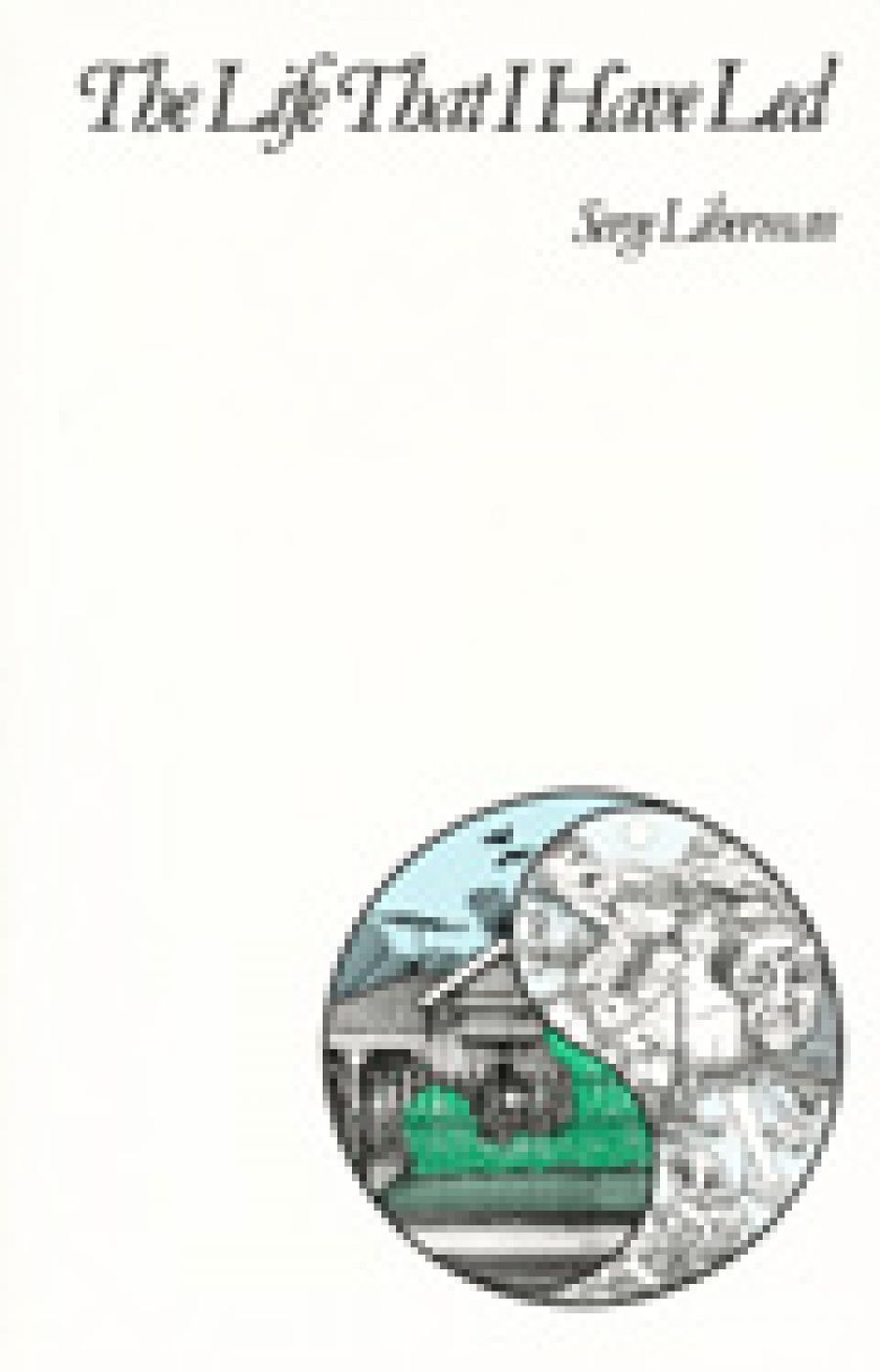
- Free Article: No
- Contents Category: Short Stories
- Review Article: Yes
- Online Only: No
- Custom Highlight Text:
Serge Liberman is that unfashionable thing, a committed writer. Not committed to a party-line, of course, but to a literature of engagement with humanity. A parable that seems to illustrate his view of the artist’s role is provided by a story entitled ‘The Poet Walks Along High Street’. The poet, Gabriel Singer, walks along a street pointed towards ‘Erehwon Creek’, peopled by allegorically named figures.
- Book 1 Title: The Life That I Have Lead
- Book 1 Biblio: Fine-Lit Press, 220 pp, $12.95 pb
So at the end of this bitter parable about the evils of artistic detachment the poet sits alone, superior all fellow human beings gone: ‘... he hastened to his desk, pulled out his chair and sat down, there to work upon his snatches of verse, there to create order out of chaos, there to forge pure art cocooned in his still, secluded, untroubled garret.’
Liberman’s humanism is stretched by a realisation that is most eloquently stated by George Steiner in In Bluebeard’s Castle:
Not very many have asked, or pressed home the question, as to the internal relations between the structures of the inhuman and the surrounding, contemporary matrix of high civilization. Yet the barbarism which we have undergone reflects, at numerous and precise points, the culture which it sprang from and set out to desecrate. Art, intellectual pursuits, the development of the natural sciences, many branches of scholarship flourished in close spatial, temporal proximity to massacre and the death camps.
All of Liberman’s stories are concerned with traditional humanist ideals. At times they explore these ideals under the shadow of the holocaust (not always literally) in what Steiner calls ‘post-culture’. Stories like ‘Seeds’ (familiar from Don Anderson’s anthology Transgressions) have a touch of Isaac Bashevis Singer about them. ‘Seeds’ is a celebration of the survival of Jewish identity through the narrator’s memories of his recently deceased Zaida (grandfather) Zerach:
The seeds of that tomato now pulped and demolished on the path where Zaida Zerach is playing his violin. They may not hear him, Father, Mother, but he is giving life to souls, giving breath to souls and on those strings that oscillate and tremble beneath the bow, those souls they dance, those souls they dance and they dance like shikkers across space across time, dancing from Jubal and King David down the generations even down to Zaida Zerach and through Zaida Zerach on to me. ‘Open your soul Raphael mine,’ he is saying, ‘open up your soul,’ and, following his bidding, I open up my soul and through that opening does his own soul enter into me and with his soul, he brings still more, whole hosts of souls, generations of souls, the ever-surviving souls of my people ...
The touches of slightly grotesque humour are particularly reminiscent of many Isaac Bashevis Singer stories. Another excellent example is ‘The Redeemer of Little Jerusalem’, with its chilling sting in the tail after its lulling comedy.
There are, however, certain problems with this commitment. At times the humanism seems less tempered by a realisation of its fragility, and a certain sentimentality takes hold – at least so it seems to me in the case of some stories. ‘Discovery in Venice’, for example, is a rather clichéd treatment of the beginning of a mixed (Catholic/Jewish) marriage. ‘Survivors’ shifts unconvincingly into a young man’s celebration of the parents he is initially running away from:
And yet, against all this, against all that in their own time had contrived, viciously, horribly, malignantly to drag them down, they had survived, they, Mother, Father, who from nothing – and, worse, from a legacy of orphan-hood, vagabondage and loss – had risen and, all migraines, neuroses and distemper notwithstanding, had clung to decency, responsibility and duty, and, however modest the degree, had thrived. If, in this, there was a tale, it was a tale, however low-key, of the humanly heroic.
‘The Man Who Hated Football’ is a strained study of, ultimately, cultural snobbery. The ending of this story seems particularly contrived. The strain is also evident in the upbeat conclusion to ‘The Jewel in the Crucible’, which features a weary doctor who doubts the efficacy of love until he reaches an epiphany that is perhaps intended to balance the state of despair that overwhelms another doctor at the end of an earlier story, ‘The Life That I Have Led’. ‘The Jewel in the Crucible’ ends with a mock (?) naive, banal litany that jars:
Let them come, I thought, all boredom, jadedness and gloom lifting off from me.
Let them come I thought, let them come, I thought. For humanity I am ready.
I am ready.
I am ready. Let them come.
Liberman’s strengths lie rather with the (more numerous) stories which test the humanist ideals against a knowledge of their partial nature. It is perhaps not surprising that the style of these stories – ‘On The Isle of Curaçao’ or ‘Fame: The Rise and Fall of Benny Liner’, for example – is much more resilient. It is with stories such as these that Liberman does indeed provide an important link to the great European tradition of short fiction.


Comments powered by CComment